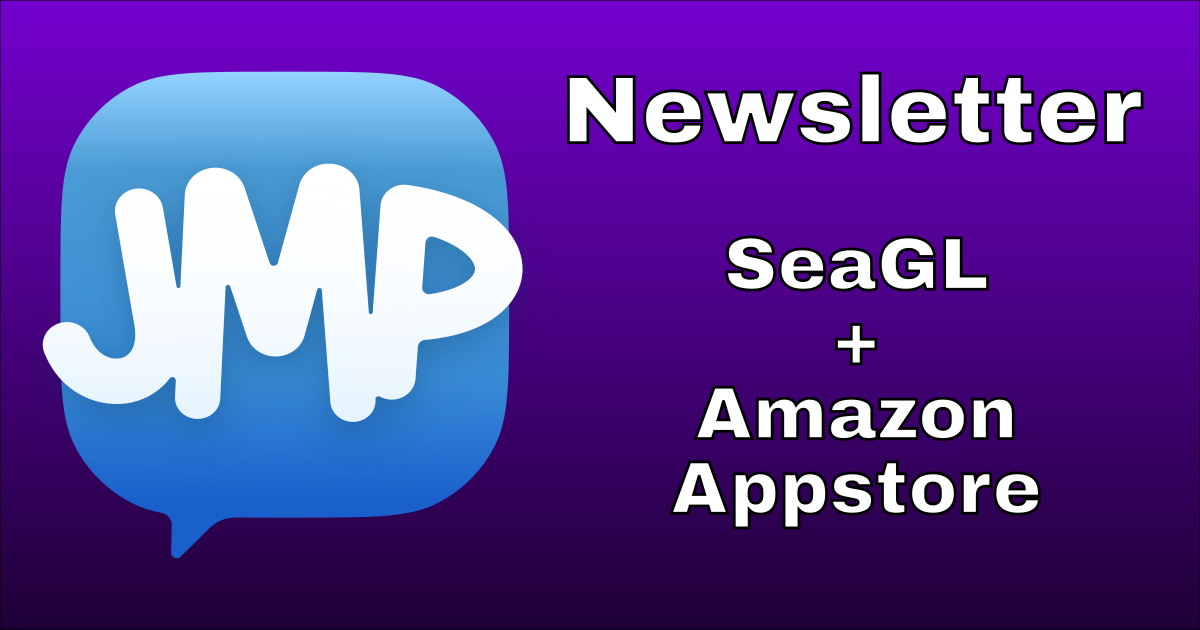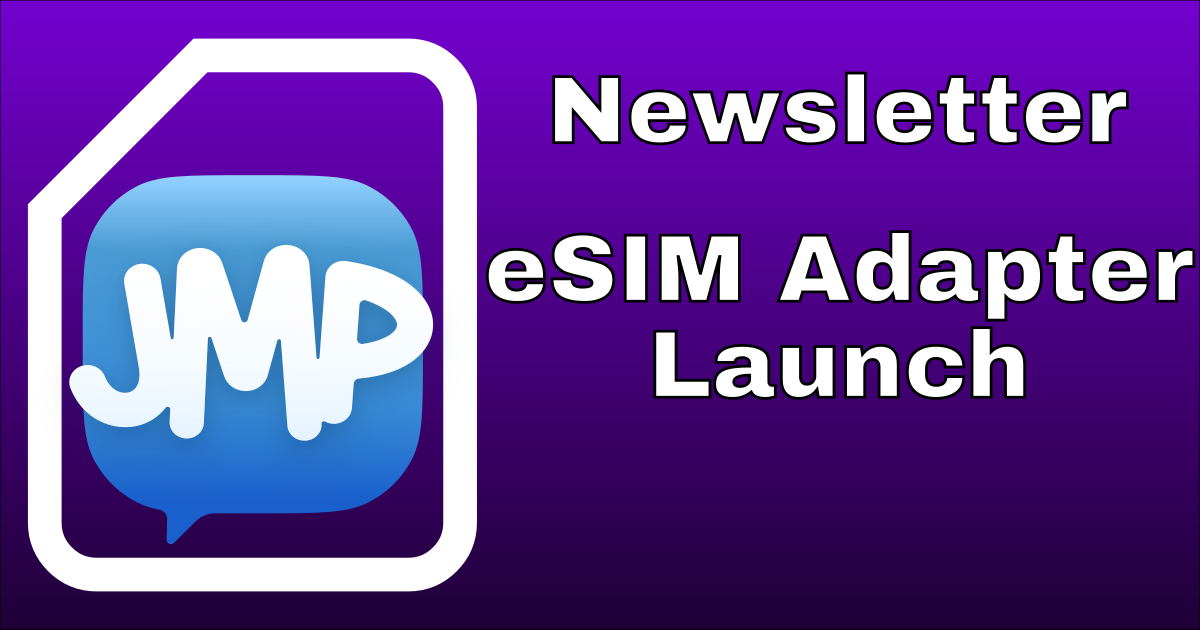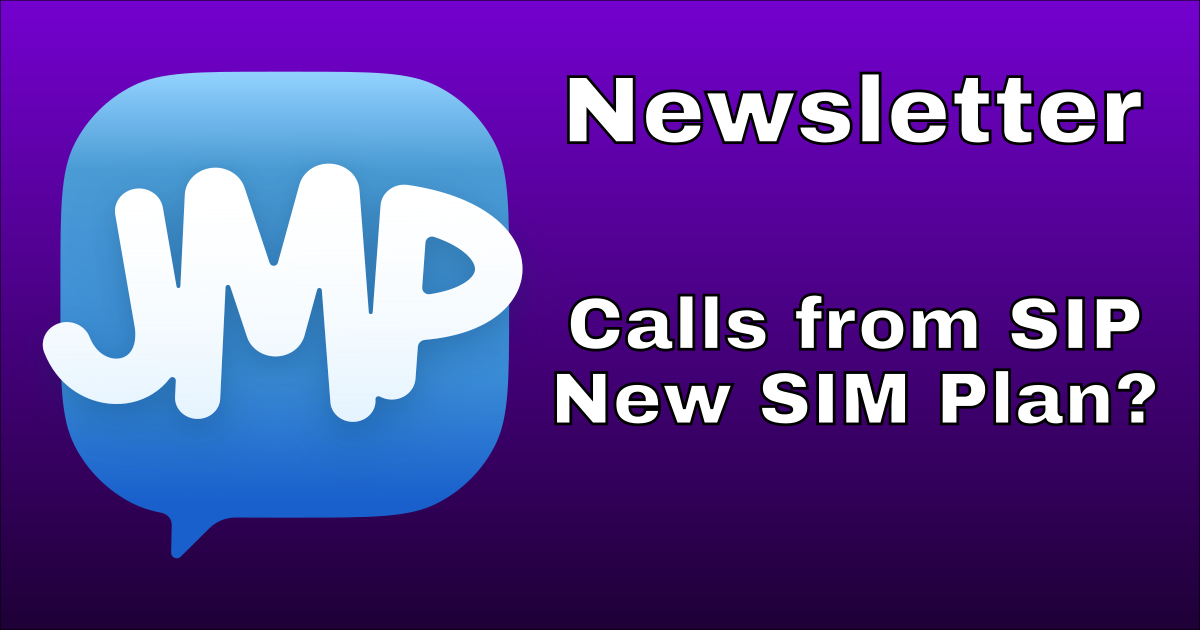
Newsletter: Cheogram App Options
singpolyma@singpolyma.net
Hi everyone!
Welcome to the latest edition of your pseudo-monthly JMP update!
In case it’s been a while since you checked out JMP, here’s a refresher: JMP lets you send and receive text and picture messages (and calls) through a real phone number right from your computer, tablet, phone, or anything else that has a Jabber client. Among other things, JMP has these features: Your phone number on every device; Multiple phone numbers, one app; Free as in Freedom; Share one number with multiple people.
End of a Year
Wow, another year has come and gone. Not many newsletters this year, but rest assured we’ve just been too busy building to write! We know one of the biggest questions we get every year is about a Cheogram-like app for other platforms, and this year we’ve come much closer to having two more of those ready for release, besides also maintaining everything you’ve already come to know and love. Below are a few highlights.
Port-out PIN Self-Service
Users can now set their own port-out PIN through the account settings bot, only shown to users with a number eligible for automatic set up (#fe75c33, #a953751, #a18b326).
Data-Only Registration
Support for data plan registration during sign-up process without a phone number (#5cdf6c0).
Cheogram WWW
We’ve been working for years on a browser-based Progressive Web App client for the Cheogram family, based on Borogove. Community members have been testing various versions of this under many names, but this fall we finally began alpha testing under the Cheogram WWW name at app.cheogram.com. Expect more to come for this app, but it is already very usable for many of the needs JMP customers have, including a Command UI / “app” view for account settings. It is also one of the only browser-based apps with native multi-account support.
You’ll note above I said “browser-based” and not quite “web app”. There is no server side component required for this app, as it connects directly to your Jabber service. This requires a special browser protocol to be supported by the service, and a few other things are needed for it to work very well. Of course we’ve worked with Snikket to make sure their offering supports everything needed for a best in class experience and more.
This app works well in a desktop/laptop/tablet form factor, but also has a mobile-optimized view. Along with support for Web Push notifications (if supported by your Jabber service; of course latest Snikket has support) this can make it a viable option on mobile platforms without a good native solution yet (to try this on iOS you’ll need to use the “add to home screen” option for notifications to work). The biggest limitation for Web Push is it cannot make a device “ring” so if you get a call while the app is not open you’ll get only a simple notification like for a message which is not always ideal.
Cheogram iOS
Also in alpha testing starting earlier this fall is Cheogram iOS. Also based on Borogove but with a native Swift UI and deeper OS integration than the PWA can muster, this app is still in a bit of an earlier stage than Cheogram WWW, but some very adventurous people are daily driving it already. Come by the community chat if you want a TestFlight link.
Distribution for Cheogram Apps
Cheogram apps area also making some changes to official distribution mechanisms. For Android the most recommended and official distribution will of course remain F-Droid. And for people who need it the app will remain available on Play Store as well. Pre-release debug builds will still be distributed in the community and custom repo. So what is changing? There will no longer be official distribution of debug APK builds tied to releases. This practise has, quite honestly, been confusing to many people who expect release-tied builds to be release builds. Releases will now come with official distribution of first-party release builds for sale at itch.io (free to JMP customers or with a free JMP month for non customers along with the purchase). Builds of future Cheogram app releases (including Cheogram WWW, desktop, etc. releases) will also be available as part of the itch.io package. Android apps from itch.io can be kept up to date using Mitch.
Other alternative app stores and distributions we have supported in the past (such as Aptoide) will no longer be official.
Unfortunately this does mean that anyone running the release-tied debug builds will either need to move to pre-release or to the new release builds in order to get updates.
Selected Recent Cheogram Android Changes
UI Improvements
- Default options in command grids look less like headers (#b156e93)
- Fixed account colors on item lists including start conversation (#957df4f)
- Reorganized contact details layout for better narrow device support (#8780945)
- “Manage Phone Accounts” button now scrollable (in list footer) (#b3bcfbb)
Chat & Messaging
- Users can now see themselves in group chat participants list (#f240e52)
- Can view own hats/roles in conference details (#3984516)
- Improved button labels in group chat context menus (#37c504b)
- Enhanced call failure UI with more informative displays (#4985523)
Connectivity
- Fixed backup import functionality (#575cdff)
- Improved password change flow for unlocked accounts (#8863066)
Stability
- Fixed numerous crashes (null pointer exceptions, binder proxy issues) (#5059358, #979ba82, #cafbf17)
- Improved file input stream operations (#6065d1b)
Group Chat
- Added workaround for Snikket’s unavailable presence handling (#7e157f5)
- Fixed menu handling on tablets (duplicate actions issue) (#c2c37f2)
- Better JID escaping for improved compatibility (#b11972b)
QR/Barcode
- Enhanced barcode compatibility (use ASCII where possible) (#e68d564)
To learn what’s happening with JMP between newsletters, here are some ways you can find out:
- The chatroom remains the heart of the community. You can also join from your web browser or from Matrix.
- The blog, where you may be reading this. Can also be followed in a client like Movim.
- The Lemmy Community
- The Subreddit
- On ATprotocol
- On Twitter
Thanks for reading and have a wonderful rest of your week!








